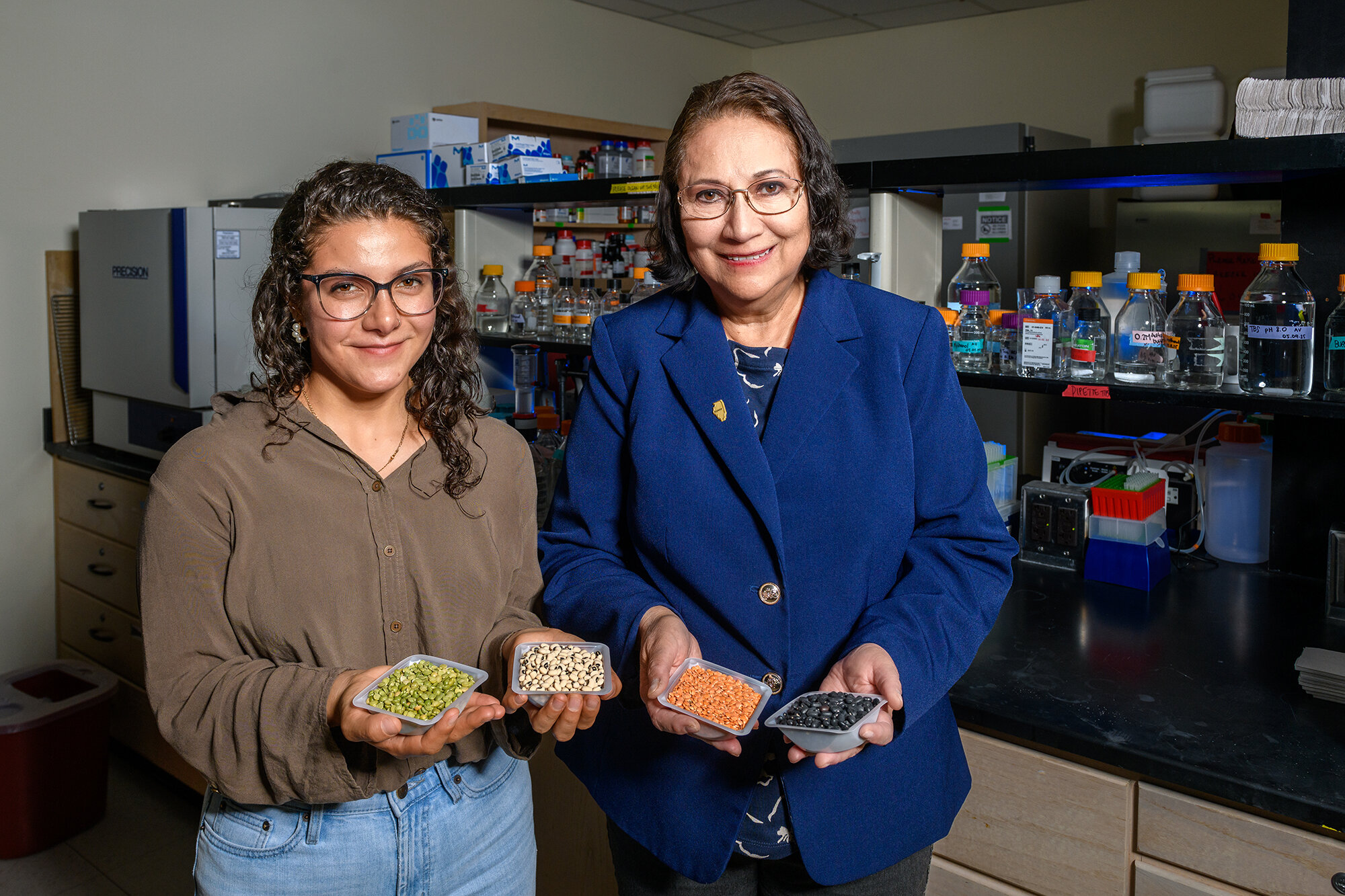The pursuit of better nutrition through plant-based foods has reached a significant milestone, thanks to research conducted by food scientists at the University of Illinois Urbana-Champaign. Their groundbreaking study on pulses—edible seeds from legumes—has uncovered innovative ways to enhance the health benefits of these foods by optimizing fermentation conditions. Pulses, including black beans, black-eyed peas, green split peas, red lentils, and pinto beans, have long been valued for their high protein content and low environmental impact. Now, with the help of fermentation, their antioxidant and antidiabetic properties, along with their soluble protein content, are being significantly improved.
This research could play a pivotal role in advancing the use of pulses as a functional food source capable of addressing some of the most pressing global health concerns, including Type 2 diabetes and cardiovascular diseases. In this article, we will explore how the scientists at the University of Illinois identified the optimal fermentation conditions, the role of probiotics in enhancing these properties, and the broader implications of their findings for both human health and the sustainability of plant-based diets.
The Power of Pulses: A Nutritional Staple
Pulses, including beans, peas, lentils, and chickpeas, are among the most nutritious foods available today. They are rich in plant-based proteins, fiber, vitamins, and minerals, making them an essential part of healthy diets worldwide. Pulses are especially vital in regions where access to animal-based proteins is limited, or where there is a growing demand for sustainable food sources.
Pulses are not only a high-protein alternative but also have a low environmental footprint compared to animal-based proteins. They require minimal water, land, and energy to grow, making them a critical food source for addressing global food insecurity, reducing greenhouse gas emissions, and conserving natural resources. With the rise in plant-based diets, pulses are gaining increasing attention as a vital component of human nutrition.
The Role of Fermentation in Enhancing Nutritional Properties
Fermentation is an ancient process in which microorganisms like bacteria, yeast, or fungi break down complex compounds in food, converting them into simpler and often more bioavailable forms. For centuries, fermentation has been used to preserve foods, enhance flavors, and improve digestibility. However, it also has powerful implications for increasing the nutritional value of food.
Fermentation has long been recognized for its ability to enhance the bioavailability of nutrients in foods, particularly by breaking down anti-nutrients (such as phytates) that can inhibit the absorption of essential minerals. Additionally, fermentation can increase the levels of bioactive compounds, including antioxidants, which help neutralize harmful free radicals in the body and play a critical role in disease prevention.
In the case of pulses, fermentation is particularly effective at improving both their antioxidant and antidiabetic properties, which are crucial for addressing the growing global prevalence of chronic diseases such as Type 2 diabetes and cardiovascular diseases. But what is the secret behind this fermentation process, and how can we optimize it to maximize the health benefits of pulses?
The Illinois Study: Unveiling the Potential of Fermented Pulses
The research team at the University of Illinois, led by Professor Elvira Gonzalez de Mejia, sought to identify the optimal fermentation conditions that could unlock the full potential of pulses. In their study, they used a specific probiotic strain, Lactiplantibacillus plantarum 299v (Lp299v), a well-known bacterium that has been shown to support gut health.
Lp299v is part of a class of probiotics that not only supports healthy digestion but also provides additional health benefits, including the production of bioactive peptides and amino acids during fermentation. These peptides and amino acids are more easily absorbed by the body compared to intact proteins, making fermented pulses even more beneficial for human health. This makes fermentation an essential tool for maximizing the benefits of pulses in a modern diet.
The team worked with several types of pulses: black beans, black-eyed peas, green split peas, red lentils, and pinto beans, grinding them into flour and subjecting them to different fermentation conditions. These conditions varied in terms of time, flour concentration, and bacterial strain used, as these factors play a crucial role in the final outcomes of fermentation.
Antioxidant and Antidiabetic Benefits Uncovered
One of the most significant findings from the Illinois team’s research is that fermentation significantly increased the antioxidant activity in all the pulse samples. The antioxidant scavenging activity, which is vital for neutralizing free radicals and controlling inflammation, improved by as much as 83%. This improvement is important, as antioxidants play a critical role in preventing chronic diseases, including cancer and cardiovascular disease.
In terms of antidiabetic effects, the study revealed that fermentation could reduce the activity of two key enzymes involved in regulating blood glucose levels. The enzyme dipeptidyl peptidase-IV (DPP-IV) plays a role in inactivating hormones that regulate blood sugar, while α-glucosidase is involved in breaking down complex carbohydrates into sugars. After fermentation, both of these enzymes were inhibited by up to 70%, suggesting that fermented pulses could help manage Type 2 diabetes.
In particular, red lentils and green split peas showed the greatest improvements in both antioxidant scavenging and protein solubility, making them the most promising candidates for inclusion in functional food products. These pulses also showed the greatest modulation of enzymes that help improve insulin metabolism, further underscoring their potential to regulate blood sugar levels and support metabolic health.
The Science Behind the Fermentation Process
To optimize the fermentation conditions, the researchers worked with raw pulse samples provided by USDA chemist Dave Luthria. The team used a combination of statistical software and experimental procedures to identify the most effective conditions for fermentation.
For the fermentation process, the pulses were ground into flour and mixed with distilled water. A pancreatic enzyme, α-amylase, was added to break down starches into simple sugars, providing easily accessible carbohydrates for the bacteria. The mixture was pasteurized to remove native microorganisms, and the bacteria Lp299v was introduced to start the fermentation process.
The fermentation conditions were carefully controlled in terms of time (8, 16, or 24 hours) and flour concentration (3% or 9%), with different batches subjected to varying conditions. This level of precision was essential, as even small changes in these parameters could dramatically alter the final nutritional properties of the fermented pulses.
After fermentation, the team analyzed the soluble compounds in the samples and found that not only did the antioxidant activity increase significantly, but the levels of phenols and bioactive peptides also rose. These compounds are essential for enhancing the health benefits of pulses, as they possess strong anti-inflammatory and immune-boosting properties. Interestingly, the impact of fermentation on protein solubility varied depending on the pulse type, with red lentils and green split peas seeing a significant increase in soluble protein, while black beans and pinto beans showed a decrease.
Fermented Pulses as Functional Foods for the Future
The findings of this study are significant, as they provide valuable insights into the potential of fermented pulses as functional foods. Functional foods are those that provide additional health benefits beyond basic nutrition. The study demonstrates that fermentation can enhance the health-promoting properties of pulses, including antioxidant activity, protein bioavailability, and the ability to regulate blood sugar.
According to Professor Gonzalez de Mejia, these findings have the potential to inform continued research on fermentation and its applications in improving the functional properties of health-promoting foods. “Pulses contain between 18% and 25% high-quality proteins, which makes them an excellent source of plant-based protein,” she said. “Finding the right processing conditions to enhance their properties can help integrate them into food products like dairy beverages or meat substitutes.”
Given the growing interest in plant-based diets and the increasing demand for sustainable and nutritious food sources, fermented pulses could play a crucial role in the food industry. By utilizing fermentation to improve the nutritional profile of pulses, food manufacturers could create new products that not only taste great but also offer significant health benefits.
A Sustainable Solution for Global Food Security
In addition to their health benefits, pulses offer a sustainable solution to the global food crisis. With the world’s population growing and the effects of climate change becoming more pronounced, the need for environmentally friendly food sources has never been more urgent. Pulses, particularly when fermented, could become a staple in addressing both malnutrition and environmental degradation.
The research team also highlighted the importance of plant-based diets for tackling food insecurity, climate change, and resource shortages. “We need to explore the sustainability of plant-based diets and ensure that these crops are integrated into food systems around the world,” Gonzalez de Mejia said. As global issues like food insecurity and climate change intensify, the potential of pulses to become a key part of the solution will only continue to grow.
Conclusion: A New Era for Plant-Based Nutrition
The findings from the University of Illinois team open up exciting possibilities for improving the nutritional properties of pulses through fermentation. As more people turn to plant-based diets for both health and environmental reasons, the ability to enhance the antioxidant, antidiabetic, and protein content of pulses could have a transformative impact on global nutrition.
Fermented pulses could soon become a cornerstone of functional foods, offering a sustainable, health-boosting alternative to animal-based proteins. Whether used in plant-based meat substitutes, dairy alternatives, or as a standalone food, these enhanced pulses could provide a vital solution to some of the world’s most pressing health and environmental challenges.
As the global food industry continues to innovate, research like this will play a key role in shaping the future of nutrition, with pulses standing at the forefront of the plant-based revolution.
Reference: Andrea Jimena Valdés-Alvarado et al, Optimized Fermentation Conditions of Pulses Increase Scavenging Capacity and Markers of Anti-Diabetic Properties, Antioxidants (2025). DOI: 10.3390/antiox14050523






